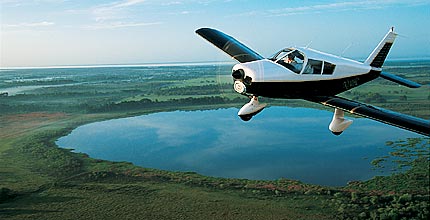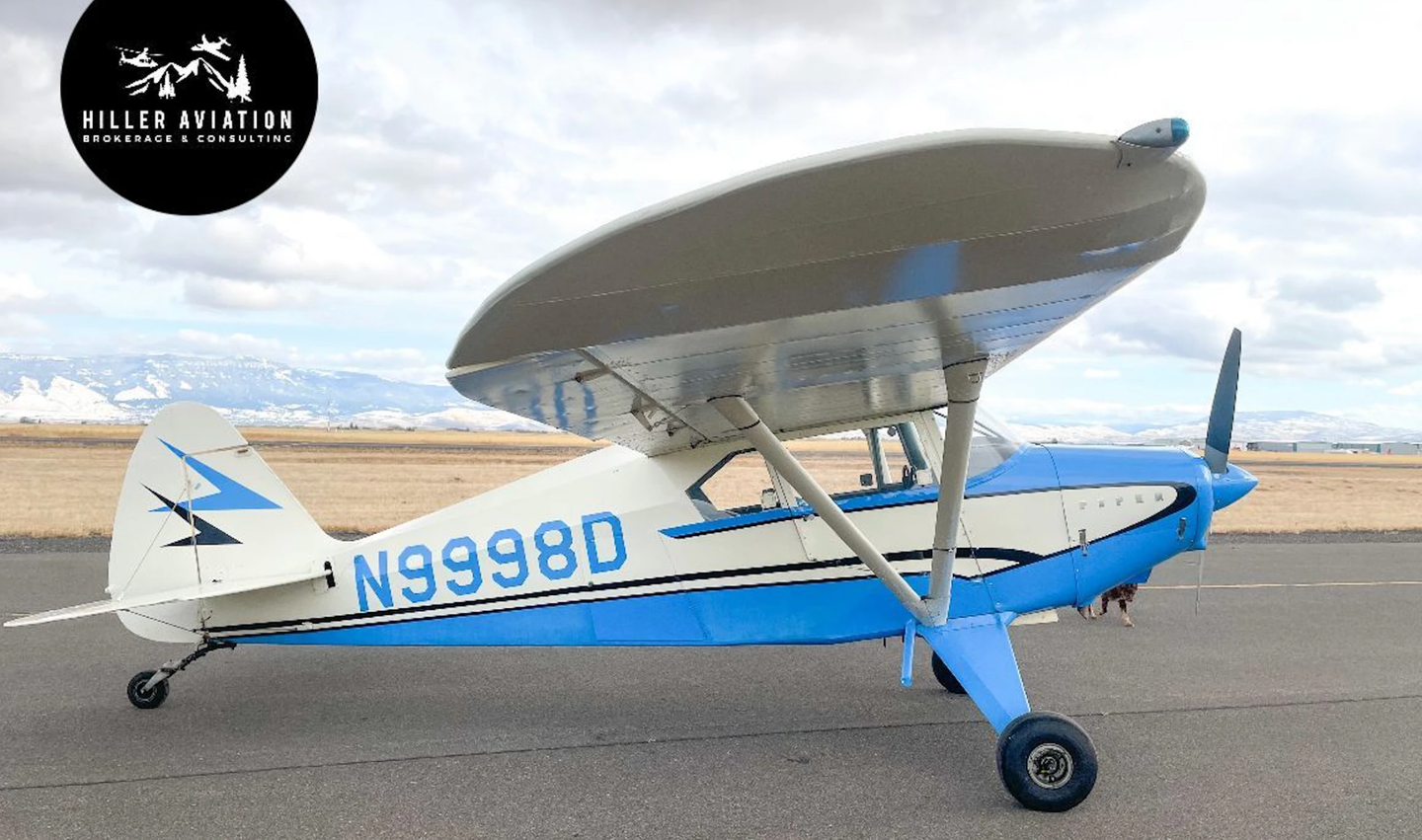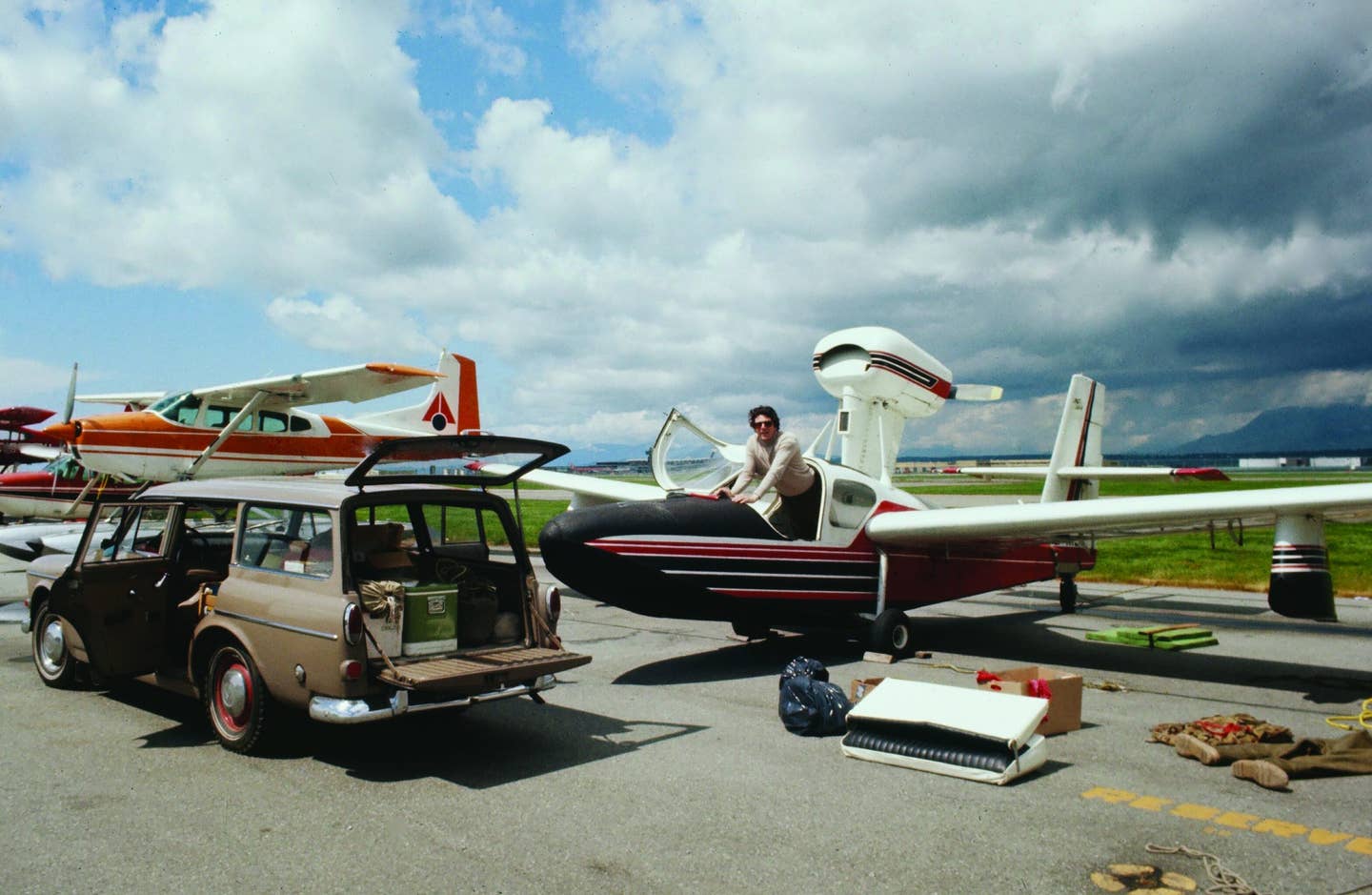An Enthusiastic Cherokee
Maybe it isn’t the fastest 140 in the world’¦but then again it might be
 The very nature of Cherokee 140s wouldn't seem to lend itself to speed. After all, the airplane made its reputation based on a docile stall and some of general aviation's most benign flying qualities. The littlest Cherokees have always been regarded as among the gentlest of trainers, so universally respected for their predictable manners that some instructors actually criticize them for being too easy to fly.
The very nature of Cherokee 140s wouldn't seem to lend itself to speed. After all, the airplane made its reputation based on a docile stall and some of general aviation's most benign flying qualities. The littlest Cherokees have always been regarded as among the gentlest of trainers, so universally respected for their predictable manners that some instructors actually criticize them for being too easy to fly.
Keep in mind, any performance increase in a Cherokee 140 would be an improvement. Cherokees were their marquee's entry-level 2+2 machines, and none were designed as high-performance airplanes. In fact, Piper hoped the original Cherokee 140 would compete as much with the Cessna 150 as the 172. The company even considered a Cherokee 115, a version with a 115-hp Lycoming O-235A engine to make the airplane more price-competitive with the 150. Performance didn't meet its expectations, however, that Piper abandoned the idea.
It's more than coincidence that all the 150-hp, entry-level, fixed-gear 2+2s offer similar performance. That's because the drag signatures of all the models is similar, despite esthetic differences in configuration. A Cherokee or Beech Sport don't have much physical resemblance to a Skyhawk; yet all three airplanes climb and cruise at similar velocities....
...In stock configuration, that is. The Cherokee on these pages belongs to James Rhoads, a professional pilot out of Wabash, Ind., and as you've probably noticed, it's not exactly stock. In fact, P&P flew the airplane three times for this report, twice on the west coast for a before-and-after evaluation of the Power-Flow-tuned exhaust system and again at the annual Sun ’n Fun Fly-In in Lakeland, Fla., for an evaluation of the Laminar Flow Speed mods. Just as you shouldn't believe everything you read on the bottom of wax cans, speed mods are always a little suspect, and we wanted to see for ourselves what the airplane could do with and without the mods.
Cherokee N140HC started as a totally stock airplane, and for some pilots, that would be enough. The basic Cherokee 140 represents what many aviators regard as aviation's ultimate pussycat (with apologies to the Tiger, Cheetah and Lynx), an exercise in simplicity. That's always been perhaps the primary attraction of Cherokee 140s. They're inexpensive to buy and operate, can carry 2+2 in a pinch (no pun intended), and most of them have depreciated as much as they're going to and are starting back up in value.
Every feature of the airplane was aimed at simplicity. Designers John Thorp, Fred Weick and Karl Bergey concentrated on creating an airplane that was easy to build, easy to fly and easy to service. The flaps were manual, activated by a Johnson bar that pulled up from the floor in three clicks. Engine cooling was so good, there was no need for cowl flaps, and the first Cherokee 140 made do without toe brakes. (Braking was via a lever mounted beneath the panel). Pitch was the only axis of trim, and the control was mounted on the roof and activated by a horizontal crank. The Cherokee used a low wing, so Piper did mount an electric fuel pump to deliver fuel to the engine in case of an engine-driven pump failure.
There was only one cabin door at right front. Baggage had to go aboard from the front and manhandled into the back. The Cherokee airfoil, unlike the semi-tapered Warrior wing, was a constant-chord, laminar-flow design. It used large, one-piece skins that wrapped around the leading edge and were riveted into place at the trailing edge. Just as the nickname suggests, the Cherokee wing really did resemble a Hershey bar. The empennage carried the theme of simplicity to its logical conclusion. The horizontal tail was a single-unit stabilator rather than a conventional stabilizer plus a movable elevator.
Apparently, Piper got it right. They sold over 10,000 of their PA28-140s, and in some respects, the model is still with us, although the current 2004 New Piper Warrior III has very little resemblance to its 1964 ancestor. There were very few 140-hp Cherokee 140s produced (most were 150-hp models), but the name was to identify Piper's entry-level airplane until the advent of the Tomahawk in 1978.
I first flew Jim Rhoads' airplane in Long Beach, Calif., in stock trim, then a day later, at the same temperature and weight after Tom's Aircraft had fitted the Cherokee with the Power Flow exhaust. The Power Flow system requires five to seven hours for installation, costs $3,675 and modifies the airplane's exhaust to significantly reduce back pressure, optimize induction airflow and improve horsepower.
Power Flow's Robin Cook and Darren Tillman discovered long ago that many aircraft exhaust systems are relatively inefficient, often failing to evacuate burned gases in the exhaust cycle. The result is that a portion of the following power stroke is wasted, trying to burn already deoxygenated exhaust.
The Power Flow unit is more efficient at scavenging exhaust gas from the cylinders, so the engine burns a more volatile mixture of fuel and air, rather than trying to reburn a portion of the previous combustion cycle. The bottom line is more horsepower at all altitudes and a higher altitude for 75% cruise. That translates directly to more cruise speed, since thinner air offers less drag.
Although the company hasn't directly measured the power improvement on the Cherokee, a similar mod on a Skyhawk (that uses the same engine) was tested on a dynamometer and scored 23 additional horsepower. That's a 15% power increase.
A little boost in climb and cruise goes a long way. Think three to five knots better cruise from the exhaust system alone. That may not seem like much, but it's a significant performance margin for an airplane in the 115-knot cruise range. Specifically, I saw a 50-rpm power increase at the same density altitude, worth a four-knot speed improvement to 119 knots. This followed a 20% improvement in climb performance. All this was with the Power Flow system alone. Rhoads' Cherokee is one of some 250 PA-28s flying with Power Flow's tuned exhaust systems installed, and it's a safe bet that most realize the same benefits.
But wait. Power Flow and Laminar Flow of Daytona Beach, Fla., are sister companies dedicated to the premise that speed isn't only for Mooneys and Bonanzas. The two companies have specialized in extracting uncommon performance from unlikely candidates, and Rhoads' Cherokee is the poster airplane for their efforts in the PA28 line. I flew the Cherokee again at the annual Sun ’n Fun show, this time, fitted with the gamut of Laminar Flow mods, and the performance improvement was even more dramatic. The Laminar Flow mods included flap and aileron gap seals, flap hinge fairings, main-gear speed pants, a nose fairing and fuel tank fairings.
Collectively, all the mods, including the Power Flow system, cost about $8,000 plus installation. That might seem a sizeable investment, especially in an airplane typically worth less than $35,000, but consider what it buys you.
Rhoads' airplane turned in a max cruise effort of 127 knots, a solid 12 knots quicker than its original speed and eight knots ahead of the pure Power Flow mod. Perhaps equally important, more so if you live out West where the rocks meet the sky, climb improves by probably 200 fpm over the stock airplane, a combination of more power and less drag. In fairness, Rhoads reports that he's done some additional tweaking and squeezed another three or four knots out of the airplane since our tests, but we haven't seen it, so we'll take his word for it.
Like most Cherokee 140s, Rhoads' airplane wasn't designed as a weight-lifter, and all the mods probably add a little to the empty weight. The result is that, sitting on the ramp, empty of fuel and people, N140HC weighs in at 1,353 pounds. That leaves a 797-pound useful load or 509 pounds of payload after filling the tanks.
Piper does offer a hedge if you need to carry more weight inside the cabin. Full fuel is 48 gallons, but if you stop at the bottom of the filler necks, you'll be hauling only 36 gallons. That will save you 72 pounds that can be allocated to the cabin, boosting payload to 581 pounds, a more realistic 2+2 allowance.
Few owners use a Piper Cherokee 140 in a full, four-seat capacity, but there are exceptions. Dave Jackson, now president of King Schools in San Diego, used to own a Piper Cherokee 140 that he used primarily to commute back and forth to work, flying from Torrance Airport south of Los Angeles to Van Nuys Airport, well north of the city in the San Fernando Valley. On a few occasions, however, Dave, his wife and two kids went traveling in his Piper Cherokee 140, deliberately downloading fuel to the 36-gallon limit. "At only about 8.5 gph," says Jackson, "I could still fly for over three hours with a reasonable VFR reserve, and that was about as long as most of us wanted to sit in a Piper Cherokee anyway. We did have to ship our baggage by United Parcel Service in order to make the trip work. The rear seat area is the baggage compartment, and if you use it for people, there's really no place left to carry bags."
Stalls in a Cherokee 140 almost aren't stalls. Pull the power off, ease the nose 15 degrees above the horizon, and the airplane's eventual reaction will be a little more than a gentle nose-bobbing up and down as the wing alternately stalls and unstalls. If the airplane is properly rigged and symmetrically loaded, you can sit there with the yoke against the back stop, mushing slowly downhill with good rudder control and even a semblance of aileron response until you run out of altitude.
Landings deserve credit for making the Cherokee legendary. Like the airplane itself, they're sheer simplicity. A full-flap stall is well below 50 knots, so a 65-knot approach speed works well. The wing is so predictable and the gear so forgiving that the Cherokee may be the easiest-landing airplane in general aviation.
The owners of Power Flow Systems continue to pursue the same goals on a variety of other Lycoming O-320 and O-360-equipped airplanes, and so far, they've delivered nearly 1,500 systems. In addition to the Piper Cherokees and Cessna Skyhawks, the system is now approved on the Cessna Cardinal, Grumman-American AA-5 series and 180-hp Mooneys. By the time you read this, Power Flow Systems hopes to have approval for the 200-hp, IO-360 engines installed in Mooney Chaparrals, Executives and 201s. For its part, Laminar Flow products are currently installed on Piper PA28s, PA32s and PA34s.
Modified or not, Piper Cherokees continue to soldier on. Despite the advent of modern, composite designs, such as the Diamond Star and Cirrus SR-20, New Piper's Warrior III and Archer III have carried the basic Piper Cherokee idea into a new century, proving, if nothing else, that simplicity does sell.
The Piper Cherokee is one of the best deals on the used market. Check out some of the otherCheapest Planes In The Sky.

Subscribe to Our Newsletter
Get the latest Plane & Pilot Magazine stories delivered directly to your inbox






